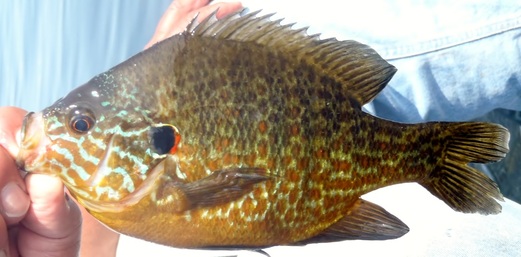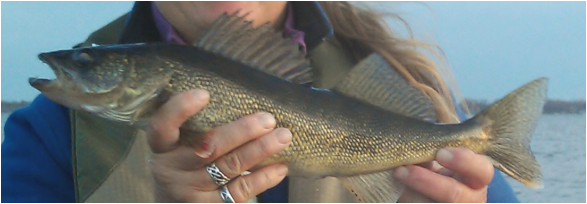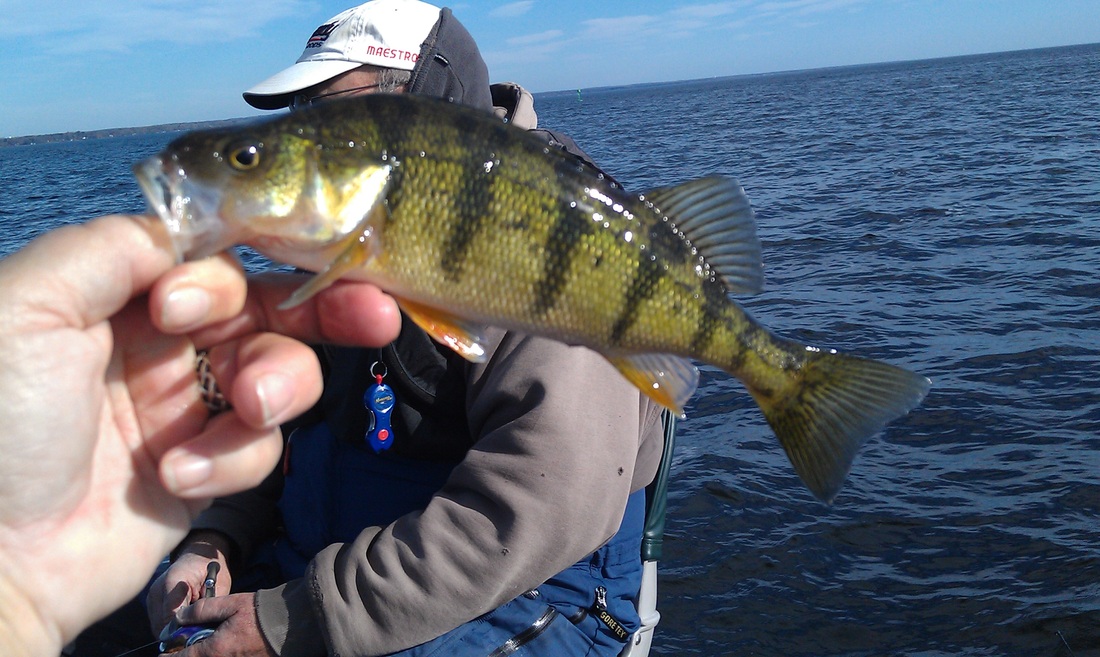
There are many different species of fish in upstate NY. The DEC website, once again, is a great place to get aquainted with a lot of the species you will come in contact with. Like this beautiful 'Pumpkinseed' - part of a group commonly refered to as 'panfish' (bluegills, pumpkinseeds, sunfish)
http://www.dec.ny.gov/docs/administration_pdf/commonfish.pdf
This link has great pictures of the fish you will be catching. Try keeping some records of what you catch - date, length, species (as best you can figure), the weather, take a lot of pictures. See how many different species you can catch!
http://www.dec.ny.gov/docs/administration_pdf/commonfish.pdf
This link has great pictures of the fish you will be catching. Try keeping some records of what you catch - date, length, species (as best you can figure), the weather, take a lot of pictures. See how many different species you can catch!
This nice drum (aka sheepshead) was caught in the spring. They are called 'drum' because they (the males) sometimes make a thumping/drumming sound when you catch them - they don;t like to be out of the water - I don't blame them!!! They are the freshwater 'cousins' of the saltwater 'redfish' - an extremely popular shallow saltwater gamefish
|
Never under or overestimate the size fish that will attack your bait/lure. The fish in the left is a round goby - an invasive species that came in the ballast water of ships from Europe and are now throughout almnost all of the Great Lakes - and have been found in some inland waters (Onondaga Lake). That goby hit a worm on the hook that was longer than itself. The fish on the right is a pickerel (another cousin to the northern pike - lots of teeth in that mouth) that hit the lure you see in the picture. The lure is half the length of the fish. Sometimes small fish will attack big lures and sometimes big fish will attack small lures - you just never know how hungry those fish are going to be.
|
|
Remember the toothy fish on the opening page?? This is what the rest of that fish looks like. They are called 'walleyes' and they are THE tastiest fish in fresh water - in my opinion. Perch - their cousins in striped pajamas - ate the next tastiest! The rest of the panfish follow - in our opinion anyways. Walleyes (aka 'wallies', or 'eyes') are generally in deeper water, especially during the bright light of day - but they are also often caught when fishing weed edges for bass in relatively shallow (6-10 ft) of water. On Oneida lake, the minimum length they have to be (to keep and eat) is 15". But regulations on different bodies of water differ - so before you keep one - make sure you check the DEC page to see what sort of length limit is on your water. If you are just Catching and Releasing - no problem- just unhook it as gently as you can as quickly as you can and return to the lake. |
|
Here is Mr Walleye's cousin - Mr Perch. Just as tasty but doesn't grow as big. That just means you need more of them for a meal! There usually is no size limit but there are numbers limits on perch. Just remember you need to check the DEC regulations for the water you are fishing to make sure there are no special regulations.
Another noteworthy thought - there are some lakes (Onondaga, for one) that have great fish in them - BUT there are advisories against eating any fish out of them - or limiting the amount of fish per week - make SURE you check the DEC site - you will find all the info you need there. Again - of you are just catching and releasing - it's easier. Remember when you keep a fish - you have to CLEAN them to get the fillets - and the smaller they are, the harder it is to clean them and the more fish you will need for a meal.. Perch can be easy to catch - but like everything else - sometimes they are not easy to catch. They take worms/minnows/other live bait readily and can also be caught on many different types of lures - small in line spinners, small crankbaits, small plastic lures. You can find the correct way to cut-up/fillet your fish at several websites - here are a few: how to fillet a 'round' fish http://www.bing.com/videos/search?q=fillet+fish+instructions&mid=F627F210F82B94D7071 0F627F210F82B94D70710&view=detail&FORM=VIRE2 Fillet instructions http://www.ehow.com/how_8244046_fish-filleting-instructions.html Take your pick - do a search - the instructions are many - find one that makes sense to you and follow it - it's easy after a few - don't get discouraged. And you can always gut your fish and cook them whole if you desire. You can do what you want - it's your limit of fish!! |



